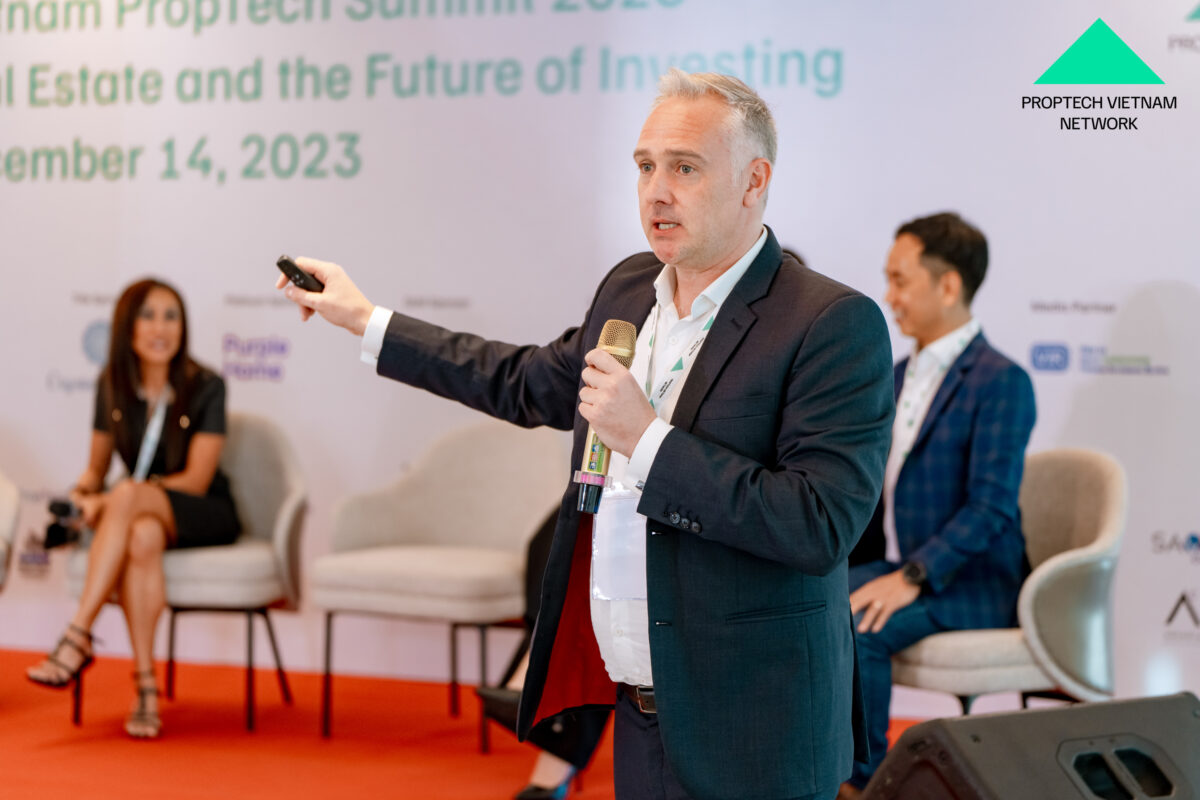Vietnam’s industrial real estate: Growth persists amidst shifting currents

At the Vietnam PropTech Summit 2023 held on 14 December, Alex Crane, Managing Director of Knight Frank Vietnam, shed light on the country’s vibrant industrial real estate landscape in the summit’s panel discussion. While highlighting sustained growth, he pointed towards emerging trends that investors and occupiers should navigate in 2024.
According to the latest report by Knight Frank, the industrial market in Vietnam remains robust, with key factors emerging in 2024 that demand attention from investors and occupiers alike. Industrial park (IP) occupancy rates in the major economic clusters of greater Hanoi and Ho Chi Minh City stand at a healthy 78% and 92%, respectively. This has contributed to significant land price growth of 14% and 58% for greater Hanoi and Ho Chi Minh City, respectively, over the period from 2022 to 2023.
During his panel discussion, Crane highlighted divergent trends across the industrial sector. Capital values rates of operating assets are experiencing downward pressure due to high financing costs, shorter land use terms, and the availability of comparatively cheaper locations across Asia. Crane remarked: “Capitalisation rates in Vietnam have increased, generally falling within the range of 9-12%, driven by a surplus of new, high-quality ready-built factories (RBF) and warehousing (RBW) nationwide. This market correction is reminiscent of the first-generation cycle witnessed in the office sector about 15 years ago.”
Knight Frank Vietnam reports that the ready-built market for warehousing and factories has attracted significant foreign investment since 2018, with a fivefold increase in investor numbers. Crane acknowledged the challenges posed by this development boom, particularly in the greater Ho Chi Minh City area where RBW supply stands at around 2.1 million m2, creating an occupier market with rental pressures averaging at US$4.5 and US$4.7 per m2 per month for the South and North, respectively. “While this trend was anticipated, it doesn’t inherently pose a risk to the market; it simply keeps costs competitive for occupiers in the near term as the market matures and scales up to compete regionally, particularly against Thailand with its RBW supply 2021 – 2024 CAGR at 6.6% compared to Vietnam’s 15%,” Crane added.
Looking ahead to 2024, Crane addressed the impact of the global minimum tax and higher logistics costs on attracting new manufacturers to Vietnam. Despite multiple free-trade agreements, rising labour and construction costs are eroding Vietnam’s cost advantage. This shift is evident in land prices, with greater Bangkok boasting industrial land prices of US$82-164 per m2 per lease term, now lower than Hanoi’s US$80-250 and Ho Chi Minh City’s US$95-280 range. “While industrial and manufacturing property in Vietnam will continue to be a significant segment, attracting new manufacturers and filling ready-built facilities will present challenges in 2024,” he emphasized.
Knight Frank remains optimistic about the long-term prospects, citing a GDP growth forecast in the range of 4.7% to 5% for 2023 from the IMF and HSBC. Vietnam’s commitment to infrastructure spending is among the strongest in the region, and the data centre market is poised for transformation, contingent on regulatory challenges being eased and a focus on power infrastructure. Crane concluded: “We made many of these predictions in early 2022, and they are mostly playing out as expected. The ongoing consolidation among developers and investors in industrial and logistics real estate, while challenging for occupiers as fewer landlords means less competition, is a trend that will unfold over many more years, presenting good opportunities for inbound investors and occupiers in the near and mid-term, especially when consulting with the right independent real estate partners.”

 Xem Tiếng Việt
Xem Tiếng Việt 

